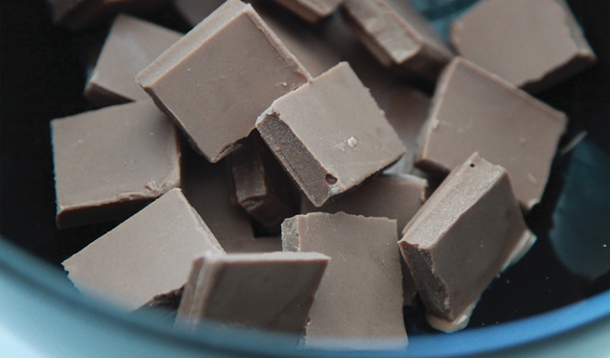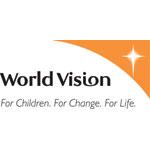
Ninety-five per cent of chocolate sold globally is not certified to be free of child, forced, or trafficked labour. This Valentine’s Day, check out The Good Chocolate Guide to find ethical options for your loved ones.
The other day my six-year-old asked me where chocolate comes from. So I showed her some cocoa in our cupboard. I also told her that children work on cacao farms—they climb the trees to cut down the pods.
“I’d love to work on a chocolate farm,” she said.
Not exactly the response I was hoping for, but what did I expect? Climbing trees and devouring chocolate are two of Sarah’s favourite things in life. From the Halloween stash and advent calendars to Easter eggs and loot bags, I’m constantly rationing treats that show up in my house.
I told her how kids are taken away from their families and forced to work long hours in the hot sun. I explained how they swing huge machetes to harvest the cacao pods and sometimes get hurt, how they can be too close to pesticides which make them sick, and how they don’t go to school.

And no, they don’t get to eat the chocolate. In fact, they don’t get much nutritious food at all.
She looked at me, stunned.
Perhaps I’d gone too far? After all, with Valentine’s Day around the corner, who was I to put the kibosh on Cupid?
“But how do we know if chocolate is made by those kids?” she asked.
It’s pretty hard to explain concepts like “supply chains” and “ethical consumerism” to a six-year-old child. I started by telling her the average Canadian eats about 5.5 kilos of chocolate each year—the equivalent of 2,600 M & Ms. Her eyes nearly popped out of her head.
She’s not reading labels yet, but she can easily spot a logo. We went online and I showed her the ethical certification logos for Fairtrade and Rainforest Alliance. I explained that the cocoa used in chocolate bars with these logos hasn’t been made by children. They may cost a bit more, but when we choose these products we can be sure we’re not hurting other kids.
“We’re the bosses of what we buy,” I added, hoping to introduce the idea of purchasing power. I showed her World Vision’s Good Chocolate Guide, which lists ethical products from larger manufacturers available in Canada.
We also checked out a cool, new ChocoFinder website and app to find local chocolate shops that sell ethical products. Together we located a chocolatier near her Grandma’s house and decided to buy her a special Valentine’s Day treat there.
These are some small steps we can take to help solve a complex problem. The reality is about 95 per cent of chocolate sold today is still not ethically-certified to be free of trafficked or child labour. An estimated two million children are involved in the cocoa industry, many of them trafficked into horrific situations.
Yet, I figure that if Sarah is learning to deal with bullies at school, she can start learning about her role in helping these children in other countries who have no one to stand up for them.

Many Canadian chocolatiers are choosing to use ethically-sourced cocoa. A new app, Choco Finder, will help you find them.
![]() Learn more about child labour in the chocolate industry.
Learn more about child labour in the chocolate industry.
![]() Do research for World Vision’s Chocolate Report Card, which will inform Canadians about the chocolate they consume. Ask your local chocolatier where their cocoa comes from.
Do research for World Vision’s Chocolate Report Card, which will inform Canadians about the chocolate they consume. Ask your local chocolatier where their cocoa comes from.
![]() This Valentine’s Day, encourage your family, friends and sweethearts to only buy ethically-produced chocolate.
This Valentine’s Day, encourage your family, friends and sweethearts to only buy ethically-produced chocolate.
![]() Read how Erica is teaching her children about human rights
Read how Erica is teaching her children about human rights
![]() Check out Erica's post about how dirty a child's work can actually get
Check out Erica's post about how dirty a child's work can actually get
![]() Learn about the sad state of children and human trafficking from Carleen McGuinty
Learn about the sad state of children and human trafficking from Carleen McGuinty
Visit World Vision’s End Child Slavery campaign at endchildslavery.ca.

